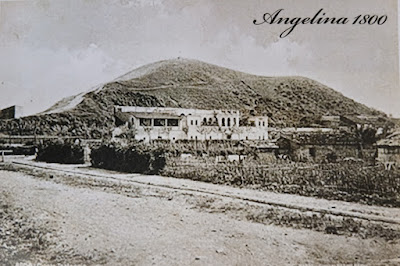At the bottom of the Aventine, near the Tiber, there is a place where the ancient Romans tossed their used amphorae. You know, those terracotta vessels that held olive oil.
They were used to hold many things, including wine and wheat, and were shipped from across the Empire to feed the people of Rome. These vessels were usually recycled, except for those containing olive oil, because the remaining oil seeped into the terracotta and became rancid. So, they were just tossed onto a public pile.
Over the centuries, that public pile became a huge hill, expertly engineered, to house over 53 million unrecyclable amphorae, mostly in shards, filling one of the largest spoil heaps ever found in the ancient world. It covers almost five acres as the base and rises to 115 feet.
This pile is the main feature of the neighbourhood called Testaccio.
Being the crack engineers they were, the ancient Romans organised and carefully engineered the creation of this dump. According to Wikipedia, archaeological excavations made in 1991 showed that the mound was a series of terraces and retaining walls filled with shards to anchor intact amphorae in place.
Today, the hill is a literal backdrop for many restaurants, whose grottoes are built into the hill and provide a window onto the ancient mound.
These restaurants are popular with the locals. And serve excellent food.
Casamora, a wine bar with food. Wonderful place to get a good glass of local, Lazio wine.
 |
| You can tell about the wine, yes? (the entry to the restaurant) |
Scott, who is very clever, asked the manager what the second-best restaurant is in the neighbourhood (this being the best of course) and she referred us to a couple of others, both on the hill.
The Flavio al Vela Vevo Detto was on of them:
 |
| That's the hill there behind the windows |
Yes, there were English-speaking tourists having lunch, but so were a lot of local folk. I had an excellent rigatoni carbonara, made with guanciale (pig's cheeks - very much like lardons, only tastier). With another nice local plonk, we like the place enough to return.
There is one restaurant that’s been around for a while, Angelina. It is situated in a building that was once part of the local slaughterhouse and it honours that tradition by keeping its original architectural features, including sloping floors, ceiling rods (used to hang carcasses) and signs indicating meat breeds.
One particular specialty is carne alla brace: grilled beef. We sat up on the terrace for lunch one sunny afternoon.
And returned for dinner, the food was so good. As we saw in several of the places we ate, big ol’ haunches of beef are displayed behind glass. Normally, one must arrive with a large-ish group before the chef will grill one of those haunches. Scott, in his wonderful Italian, went down to talk to the chef and managed to charm him enough to grill us a smallish haunch to share. Worth it, man.
(The vintage photo at the top of this post features a white building abutting the hill. That building houses Angelina.
The Testaccio Market is an excellent place to buy fresh fruit and veg. We were happy to have it during our stay at the flat. One stall was dedicated to small independent wineries from Italy and other European countries. We visited the very nice gentleman and his wife, who told us about the wines and happily served us samples of the traditional cheeses.
 |
| "Da Corrida" al Banco 18 in the Testaccio market |
Walking away from the hill down a green park, we came across an old cemetery. I mean really old: it includes a monumental pyramid, the tomb of one Caius Cestius from BC12. This guy is known basically for his pyramid and nothing else.
There are others of note buried here: the poets Keats and Shelly, and Goethe’s son.
And of course there are mosaics even here:
One other place we visited in Testaccio was Dandy’s, an upscale men’s shop where Scott bought himself a nice jacket.
I liked the place because this was featured on the floor in front of the desk:
 |
| Told ya, about the mosaics |










No comments:
Post a Comment